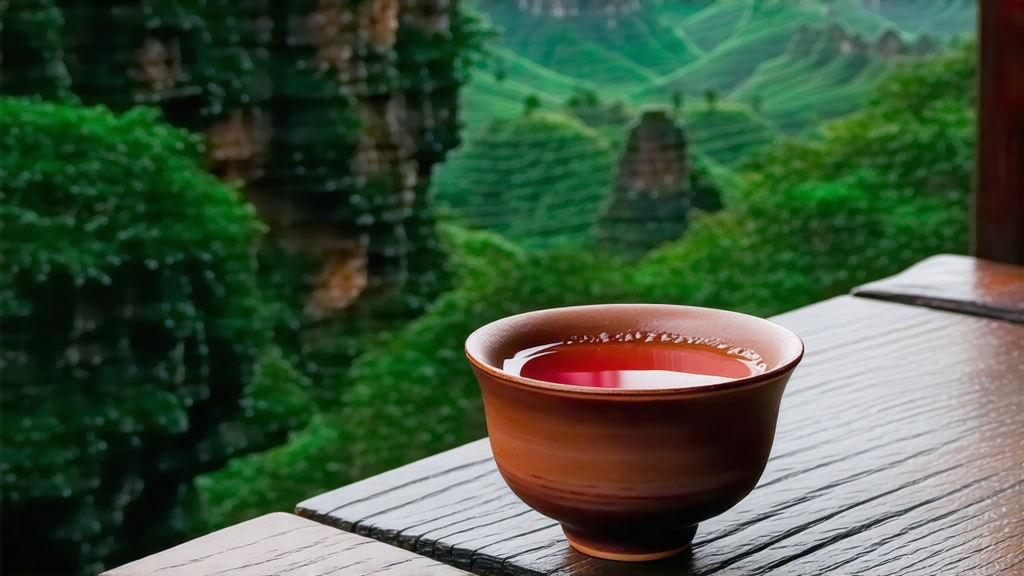
Wuyi Da Hong Pao—literally “Big Red Robe”—is the most mythic name in the oolong universe. To the Chinese it is not simply a tea; it is a cultural monument, a liquid echo of Song-dynasty poetry, Ming-dynasty imperial tribute, and modern state diplomacy. Yet beyond romance lies a real leaf born of terror-etched cliffs, mineral soils, and a 400-year-old craft that turns green freshness into charcoal-kissed complexity. This article invites the international drinker to step past the legend, climb the narrow plank paths of the Wuyi Mountains, and meet Da Hong Pao in its many faces: mother-tree, qi-dan, commercial blend, and boutique cliff garden. You will learn why the same tea can taste of orchid honey one season and roasted chestnut the next, how a 1,200 °C charcoal pit can “sing” inside a bamboo basket, and why the Chinese talk of “rock rhyme” (yan yun) the way Burgundy lovers speak of terroir. By the end you will be able to brew Da Hong Pao with the precision of a Wuyi master, judge leaf quality by the sound it makes leaving the tin, and describe mouthfeel with the vocabulary of stone, fruit, and fire.
-
Geological cradle: the Wuyi “Danxia” landscape
The Wuyi range in northern Fujian is a UNESCO dual heritage site where 100-million-year-old red sandstone cliffs rise above the Nine-Bend River. Day-night temperature swings of 15 °C, 85 % humidity, and constant mist create a natural greenhouse that slows leaf growth and condenses flavor. The substrate is short on nitrogen but rich in potassium and fluoride; tea bushes sink roots into fissures only centimeters wide, mining minerals that later translate into the celebrated “rock bone.” Locals say “if the cliff is steep enough for monkeys to fall, it is good enough for tea.” The six famous cliffs—Tianxin, Nine-Dragon, Tiger-Running, Ghost-Cave, Horse-Head, and Three-Power—each confer a micro-flavor: Tianxin lends floral brightness, Ghost-Cave adds a shadowy bitterness that melts into sweetness, Horse-Head gives flinty smoke. -
Historical strata from Ming to Mars
The first written record appears in 1385 when a Ming scholar recovered from illness after drinking tea plucked from bushes half-way up Nine-Dragon Cliff; he draped his red imperial examination robe over the plants in gratitude—hence the name. By 1600 Da Hong Pao was tribute tea, carried 2,000 km north on horseback and barges. In 1924 six mother-tree bushes were officially catalogued outside Tianxin Yongle Temple; they still survive today on a 30-meter ledge reachable only by ladder. In 1972 Mao Zedong gifted 50 g of mother-tree Da Hong Pao to Nixon, joking it was “half of China.” In 2005 the last commercial harvest from the mother trees (20 g) sold for ¥208,000, after which the Chinese government protected them as living cultural relics. Modern science has since cloned the genotype, giving rise to qi-dan (purebred) gardens that preserve the original DNA while respecting ecological limits. -
Taxonomy: mother-tree, qi-dan, que-she, and commercial blends
Mother-tree (six bushes): no longer harvested; symbolic.
Qi-dan: asexually propagated cuttings from the mother tree, grown in the same cliff zone; legally protected designation.
Bei-dou #1: a 1958 clone selected for higher yield and frost resistance; still mineral but less complex.
Que-she (“sparrow-tongue”): a naturally occurring variant with smaller leaves and brighter acidity.
Commercial Da Hong Pao: skillful blend of 3–5 Wuyi cultivars (often Rou Gui, Shui Xian, and Qi Dan) designed to balance aroma, body, and price. A good blend is not inferior; it is the orchestra versus the soloist. -
Craft: the eight stages of rock oolong
-
Picking: 3–4 open leaves with a stiff petiole; usually late April when the leaf’s mineral load peaks.
-
Withering: sun-wither on bamboo screens for 30 minutes, then move to shaded indoor racks; moisture drops from 75 % to 68 %.